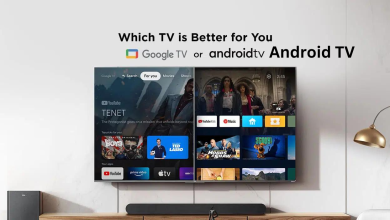7 Best Tips to Boost Google Display Network Performance

Let’s address some widespread misconceptions about the Google display network so you may use it to increase your audience. According to the best PPC agency London UK, the most significant contextual ad network on the internet is still the Google display network (GDN). Additionally, it’s an affordable option to enter the market for awareness and re-engagement.
There’s a good chance the GDN has your target market. There are countless choices for targeting. According to the best PPC agency London UK, the GDN is a good place to find the outcomes you want, whether retargeting your current consumers or reaching a new audience with awareness campaigns.
It’s critical to comprehend the levers and mechanisms you can control in Google ads as it inevitably moves toward automation to achieve peak performance. Despite reportedly reaching over 80% of all internet users worldwide, search marketers tend to underuse it in favor of PPC bottom-of-the-funnel strategies to increase last-interaction conversions.
This article will describe typical GDN use cases, targeting possibilities, upper-funnel attribution issues, and important metrics you should be using to build a case for full-funnel GDN investment. It will also help you assess the effectiveness of your display network activities.
The vast audience that advertisers can reach has a significant influence. However, advertising dollars are useless if businesses don’t target correctly and avoid typical errors. Here are some pointers according to the best PPC agency London UK to boost the effectiveness of your GDN ads.
- Remarketing Campaigns
One that is obvious but by far the most significant option. If you’re ever going to see a return on the show community, it will almost probably come through remarketing.
Remarketing refers to the ability to place a cookie on a visitor’s browser through your website. Then, whenever they visit other websites on the Google show community, you’ll be able to display advertisements targeted at these website visitors.
One of the more usual methods used by advertisers on GDN is remarketing. This makes it possible for advertisers to target potential clients who may have visited their website but didn’t buy.
This is a straightforward strategy, but you should consider more sophisticated methods to strengthen your remarketing operations.
- Change Your Member Duration.
The member duration refers to the period you will continue retargeting the visitor. In the case of a lengthy sales funnel, Google provides a default member duration of three months that advertisers can take into account. If the company’s sales funnel short, you can lower this option.
- Bid More on Cart Abandoners.
One could allocate more funds to them to encourage cart and conversion abandoners to continue the conversion process rather than using a blanket bidding technique. By doing this, the conversion rate will increase, and financial value will result.
- Lower your bid on non-converters.
Lower the bids on traffic from the homepage and informational pages because these users do not intend to convert. In this approach, advertising can spend the money they save on converting customers.
- Goal Comparable Audiences
The similar segments tool in Google ads tries to find people with similar interests and purchasing behaviors as your remarketing audiences.
If you have previously set up remarketing, the best PPC agency London UK advises concentrating on related segments within their ad team to see if you can increase effectiveness. By attracting new clients with similar shopping behaviors to your website, you may increase the effectiveness of your present remarketing initiatives.
Instead of combining remarketing lists and related audiences into a single marketing campaign, we would always advise segmenting them into distinct campaigns to track relative effectiveness. Comparable categories frequently attract a much larger audience than your remarketing lists.
- Focus on Placements
Among all the targeting choices offered to advertisers on the Google show community, using controlled placements is one of the finest ways. You can also have control over where your advertisements appear.
When you utilize concentrating tactics like pursuits or topics, Google makes assumptions about which websites are linked. Thus there is a risk that your advertising may also appear on unrelated websites.
It is a safe option for marketers to simply expand into show marketing since, by focusing on placements, you can specify which websites you want your ads to be displayed on.
- Add similar audiences.
Advertisers can target people with similar online activities to the remarketing audience by using Google ads’ “Similar Audience” targeting function. Advertisers frequently set up a remarketing audience.
If they do, it’s a fantastic method to broaden your audience, build brand recognition, and attract new clients. Similar to how they can choose the “Similar to Remarketing Lists” option in the targeting choice when creating a new display ad campaign.
For each type of targeting, a different campaign should be designed. In this manner, the effectiveness of both campaigns may be assessed and improved. Similar audiences have a larger audience base than remarketing and can greatly improve GDN display ad effectiveness.
- Look Out For Cellular Apps
Are you using a keyword, a topic, or an interest to focus on? Has it been long since you looked at the sites where your ads are being displayed?
In such a situation, there’s a good probability that your money will be wasted on mobile video games. This problem has arisen mostly due to kids using their parents’ mobile apps, which usually leads to unintentionally clicking adverts.
- Use Responsive Show Ads
Relying on static image testing to determine what connects with customers the most is long gone. The default ad type for this marketing campaign is responsive display ads.
Additionally, they appear more frequently than static advertising because the stock is available. You can choose from various headlines, descriptions, images, and movies when creating responsive display ads.
Google then blends and matches ads depending on the stock that is currently available to show each customer the ads that are the most relevant to them.
- Test and optimize.
You should continually test the ads and optimize the best ones. Google ads offer “experiments” in its interface that make A/B testing relatively simple. Simply put, it duplicates any test campaign you choose.
The targeting criteria can then be changed to conduct a side-by-side test. Here you may find comprehensive instructions on how to set up an experiment.
Determine which ad groups or campaigns are doing the best. After that, divide them up so that you can allocate more advertising funds to the ones that offer the best returns.
The Final Words
If you use the show community properly, it may be a wealth of alternatives. Google’s dependence on automation may make or break the success of a campaign. You’ll have more control over marketing campaign effectiveness by picking the most appropriate levers to pull in your campaign settings and picking the most relevant audiences. When planning a marketing campaign, it’s always a good idea to double-check your settings and stay informed of any industry changes that could affect your campaigns. Try each of these suggestions to improve the effectiveness of your Google display network ad campaigns. All of these suggestions may appear simple, yet they greatly impact performance. Start the implementation process now and commit to creating smarter PPC ad content.



